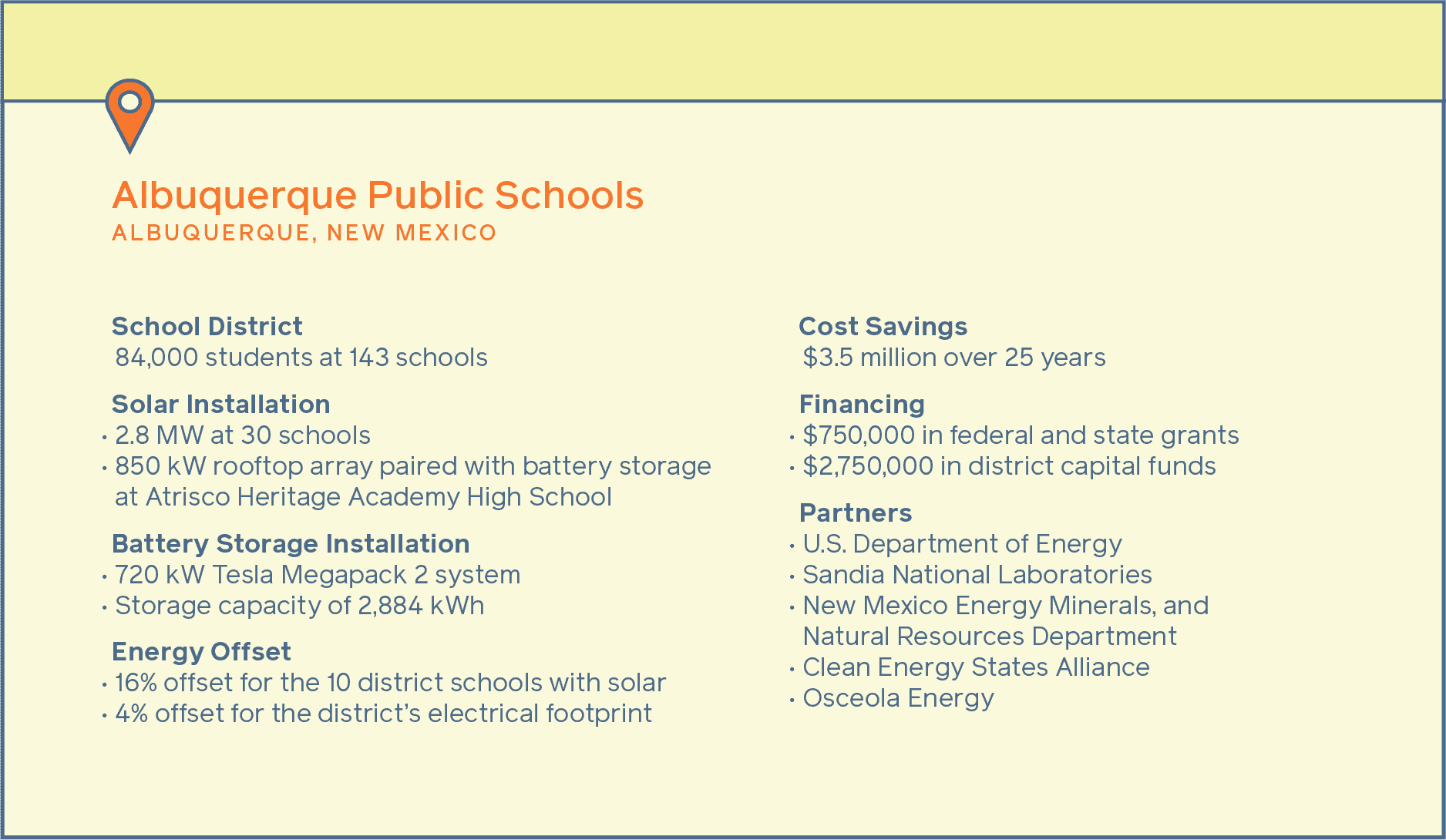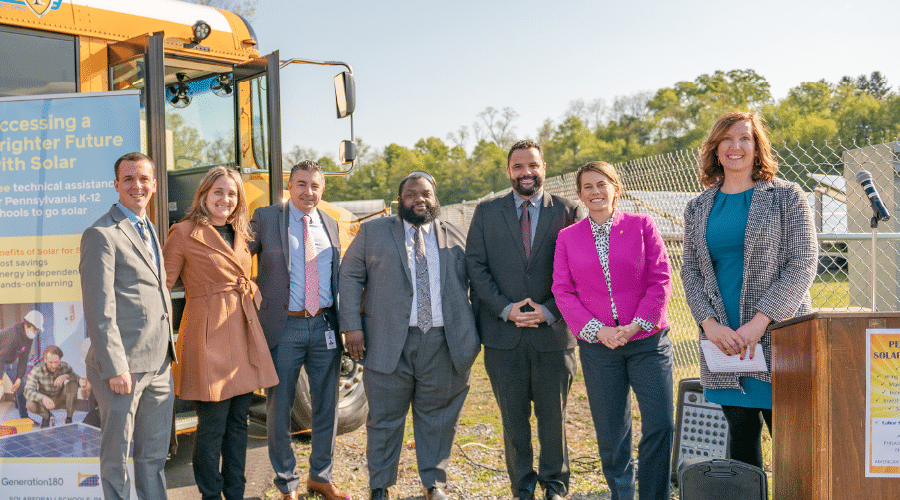This case study was originally published in the 4th edition of Brighter Future: A Study on Solar in U.S. Schools (2022).
Albuquerque Public Schools (APS) serves nearly one-quarter of New Mexico’s public school students at 143 schools across a region spanning more than 1,200 square miles. The largest district in the state is costly to operate, and it initially turned to energy conservation and clean energy to reduce its burdensome utility bills. Now APS is at the forefront of clean energy deployment in the public school sector and boasts the most extensive battery storage system in New Mexico.
For the past decade, the APS Water and Energy Conservation Committee (WECC), which includes district leadership, municipal utility staff, and the state department of energy staff, has led the district to set and meet ambitious sustainability goals, such as reducing water and energy use by 20% over a 10-year period ending in the 2023–2024 school year. With WECC’s guidance, APS codified sustainability into school board policy and now requires that all new buildings are solar-ready, receive preliminary photovoltaic designs, and meet green building standards. The district’s pioneering efforts in sustainability now include a solar + battery storage project that will drastically reduce energy costs and provide resiliency during power disruptions.
This first-of-its-kind project is part of the Energy Storage for Social Equity Initiative sponsored by the U.S. Department of Energy and Sandia National Laboratories and is jointly supported by New Mexico Energy, Minerals, and Natural Resource Department, Clean Energy States Alliance, and Osceola Energy. The state’s largest high school, Atrisco Heritage Academy High School, was selected as the site for the solar + battery storage project due to its hefty utility bills, which can exceed $50,000 every month in the summer. More than half of Atrisco’s electricity bill comes from demand charges, which are based on the highest electricity use at any point during the month. The batteries can be used to discharge stored energy to the grid incrementally throughout the day to reduce those peaks (also known as peak shaving) to avoid demand charges and lower the electricity bill. The cost savings for this project are anticipated to be $3.5 million over 25 years.
APS broke ground on the solar + battery storage project in October 2021. The fully installed system will include 2,200 rooftop solar panels and a Tesla Megapack 2 battery with an energy storage capacity of 2,884 kWh. APS anticipates that the system will be operational by the end of 2022.
The next phase of the project is to evolve the battery system so it can be used for islanding – taking the building off the grid and using the battery to supply power for designated areas. The ability to keep school buildings operational when the grid goes down would ensure that students can stay in school for learning, meals, and other essential services. Atrisco serves a population where 14% of students live in households below the federal poverty line and nearly all students are eligible for free or reduced-price lunch. The campus has an onsite community health clinic and is often used as a community gathering space. A resilient school campus would provide numerous benefits to students and the community.
APS is currently working on an implementation plan and a cost analysis so when the time comes to enter this next phase, the district will be ready. The battery system would be designed to provide backup power to an area of campus that includes large spaces where people can congregate in an emergency or during a grid outage, such as the gym, library, and cafeteria. This project will be a pilot for rolling out similar projects at other district schools.
“At APS, we’re creating a culture within the district and the community that promotes and values sustainability,” says Anthony Sparks, APS Project Manager and WECC team member. “As the largest district in the state, we want to set a good example and do groundbreaking work so smaller districts can implement similar projects and not be afraid to do so.”

















